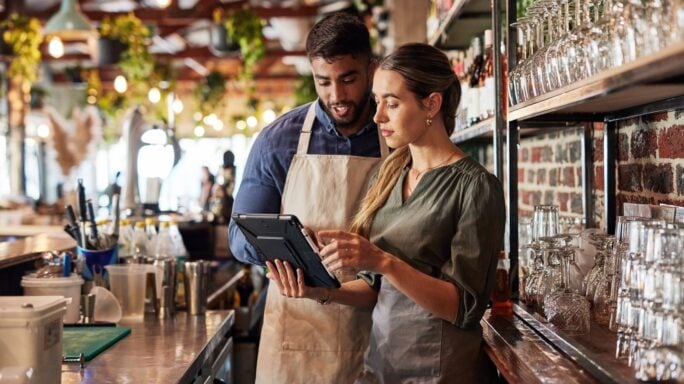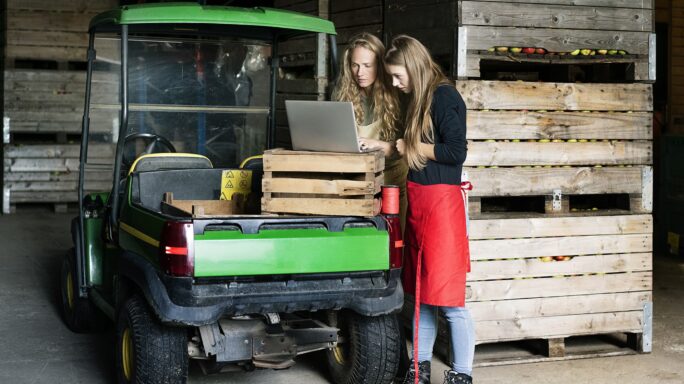Handling VAT when trading internationally

Introducing international trade to your business can be a great way to improve performance and diversify income.
It’s big business and essential to the health of the economy. UK businesses make exports of more than £60bn each month, and total imports tend to be even higher.
Supply chains are nowadays very complex, and unlikely to involve goods or parts not manufactured in a different country. Being part of that chain can be a route to growth.
For businesses wanting to expand in this way, there are many things to consider, such as sourcing suppliers, securing finance and handling deliveries. These are less onerous than they might sound but VAT is certainly one of the biggest considerations.
Getting VAT wrong can invite fines from HMRC but much work has been done to simplify VAT for international trade over the years.
Brexit changes the way UK businesses trade with European Union (EU) countries but it should still remain relatively simple following the end of the Brexit transition period on 31 December 2020.
Below, we provide advice on trading overseas in three circumstances:
- Trading within the EU using the current rules that remain in place until the Brexit transition period ends.
- Trading within the EU following the end of the transition period.
- Trading with non-EU countries.
Note that the guidance below is for goods that are not covered by excise duties, which adds an additional later of complication. Excise apply to goods such as tobacco, alcohol and hydrocarbon or biofuel.
Additionally, what’s discussed only affects your business if it’s VAT-registered. We also assume you’re selling VAT-eligible goods, of course.
How Brexit will affect VAT when trading internationally
Although the UK left the EU at the end of January 2020, the transition period doesn’t end until 31 December 2020.
During that time, the UK remains aligned to the EU VAT directive while negotiations continue to work out VAT arrangements for UK-EU trade.
The bottom line is that nothing changes for businesses with regard to VAT when trading with EU countries until 31 December 2020.
We don’t yet know the full details of how VAT will be handled after this. But we do know the government will introduce postponed VAT accounting, which means VAT won’t need to be paid immediately for imports from any non-UK country.
Instead, it will be accounted for in your VAT return, and offset against output VAT. This will mean the introduction of collecting VAT on imports won’t affect cash flow too severely.
Similarly, for VAT purposes, businesses in EU countries will consider the UK as they do any non-EU country. Goods you send them will need to be accounted for VAT within that country.
However, we won’t know for sure what the rules are until the transition negotiations are complete.
VAT for selling internationally
The way businesses deal with VAT in international trade depends on who your customers and suppliers are, and whether they are within the EU or in another country.
Business-to-customer (B2C) sales within the EU
Prior to the end of the Brexit transition period, you charge and receive VAT in the usual way for sales within the EU to individual consumers – as if selling to consumers within the UK. This is known as distance selling.
Following the end of the Brexit transition period, it’s likely you will zero-rate these sales for VAT purposes, with the purchaser becoming responsible for accounting for the VAT to their own government.
This should be communicated this to them prior to purchase.
It’s likely you’ll be required to declare the goods in the customs documentation or labelling to assist with this.
Business-to-Business (B2B) for non-VAT registered EU businesses
The same rules as mentioned above for B2C sales apply if selling to non-VAT-registered businesses in the EU – you charge VAT according to the distance selling rules.
After the transition period, you will again probably zero-rate these goods. The business receiving the goods will be responsible for accounting for the VAT, and will class it as an import.
You will need to communicate post-Brexit changes like this to your customer, and you might need to adjust your terms of business accordingly.
B2B sales within the EU for VAT-registered businesses
Prior to the end of the Brexit withdrawal period, for sales within the EU to VAT-registered businesses, you usually zero-rate the sale.
The sale is referred to as making a dispatch, and the reason you zero-rate is because of the Reverse Charge rule. This means that, within the EU countries, the buyer is responsible for recording the VAT transaction, rather than the seller.
You will need to know the customer’s EU VAT number, and possibly complete an EC Sales list and an Intrastat report if your selling income rises above a certain level.
Prior to the end of the transition period, if the value of your sales pass a certain threshold then you might need to register for VAT in the country where the business is based.
Following the end of the Brexit transition period, you will probably continue to zero-rate the sale but in your VAT accounting these will be classed as exports rather than supplies.
Your customer will need to account for the VAT in their country (and may have to pay customs duties too). There will be no need for you to complete the EC Sales list and Intrastat report.
B2B sales outside the EU
If you sell to customers outside the EU you’re making an export. The sale is usually zero-rated. This will probably not change following Brexit.
Zero-rating VAT
If you need to zero-rate any sales for whatever reason, you should always keep proof that the goods have been exported as part of your VAT records.
Failure to keep these accurate records could cause HMRC to demand VAT on the goods – which could mean a tax bill of an additional 20% on those goods.
As with UK sales, the value of your exports and any VAT charged on them is included in your VAT return. You’ll also need to give HMRC some extra details on your sales to VAT-registered businesses in the EU until the end of the transition period.
VAT when buying internationally
Right now, the way you deal with purchases from overseas suppliers also depends on whether they are within the EU.
Prior to the end of the transition period, VAT-registered businesses in the EU selling to you normally zero-rate their sales to you (these sales are known as supplies in VAT terminology).
You must provide the seller business with your VAT number for this to work. You then become liable for VAT at the usual UK rate, as part of the same Reverse Charge rules mentioned above.
You can reclaim that VAT on your VAT return in the same way as for other business purchases.
Following the end of the transition period, it’s likely you will be charged VAT on the purchase at the moment it enters the UK, alongside any customs duties owed. This is also the existing rule for purchasing from businesses outside the EU.
In the 2020 Spring Budget, the UK government announced that it’s applying postponed accounting for VAT following the end of the transition period.
This will mean you can account for the VAT on your VAT return, rather than paying it immediately upon receiving an import.
This will avoid the immediate need to pay VAT impacting cash flow within businesses, and will apply to all imports from outside the UK – EU and non-EU countries.
We should have more information about this towards the end of 2020, when further details become available.
Conclusion
Handling VAT when selling or buying internationally can be a challenge, especially with Brexit uncertainty remaining.
Because of the risk of being landed with a substantial bill or even a fine should you get it wrong, it really does pay to ensure you get correct advice up front. Most accountants have a good knowledge of how VAT works, while VAT specialists are also available.
Additionally, good accounting software will work in line with the VAT rules, which (alongside expert advice) should help you make the correct choices.
Editor’s note: This article was first published in July 2017 and has been updated for relevance.
International trade: A guide to mastering the economic climate
Read this guide to learn how technology is transforming the nature of international trade and how you can leverage the changes driven by it to give your business a competitive advantage.






Dear Mr Thomas-Bryant,
Thank you for the very informative article, it has been very helpful. I wonder whether you know what the procedure is for companies who formerly fell under the triangulation system? I buy from the EU and sell to customers in the EU without the goods entering the UK, so I file an EC Sales report, but I did not pay VAT on EU sales prior to Brexit. My understanding is that under the B2B cross-border rules I don’t have to charge my customers VAT, but do I need to pay VAT to my EU supplier?
Should I use VAT Code T0 or T9 to export to Singapore?
Should I now use VAT Code T17 for all imports from outside the UK?
If I sell software or telephone support to Kenya from the UK – Do I need to charge VAT?